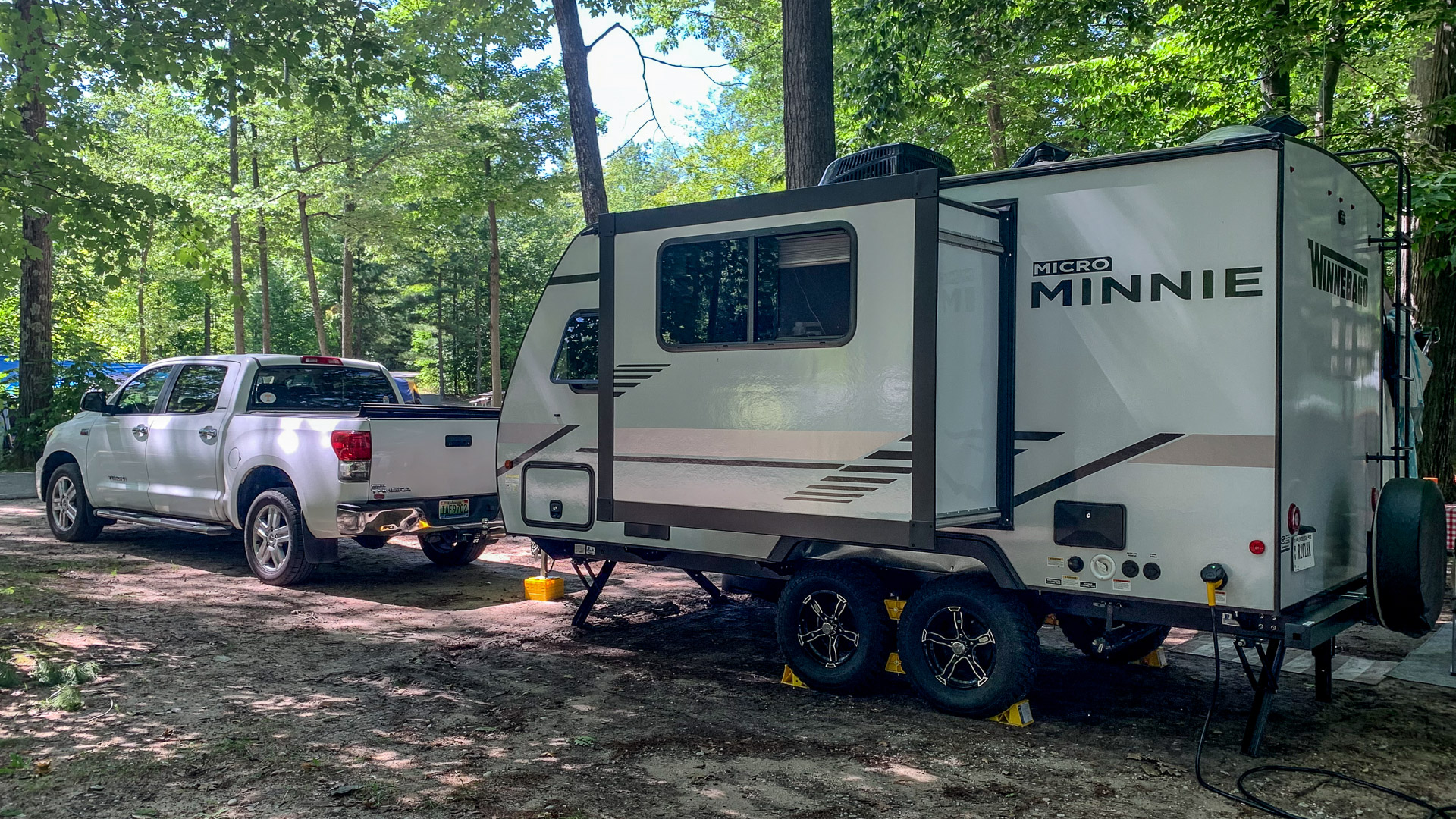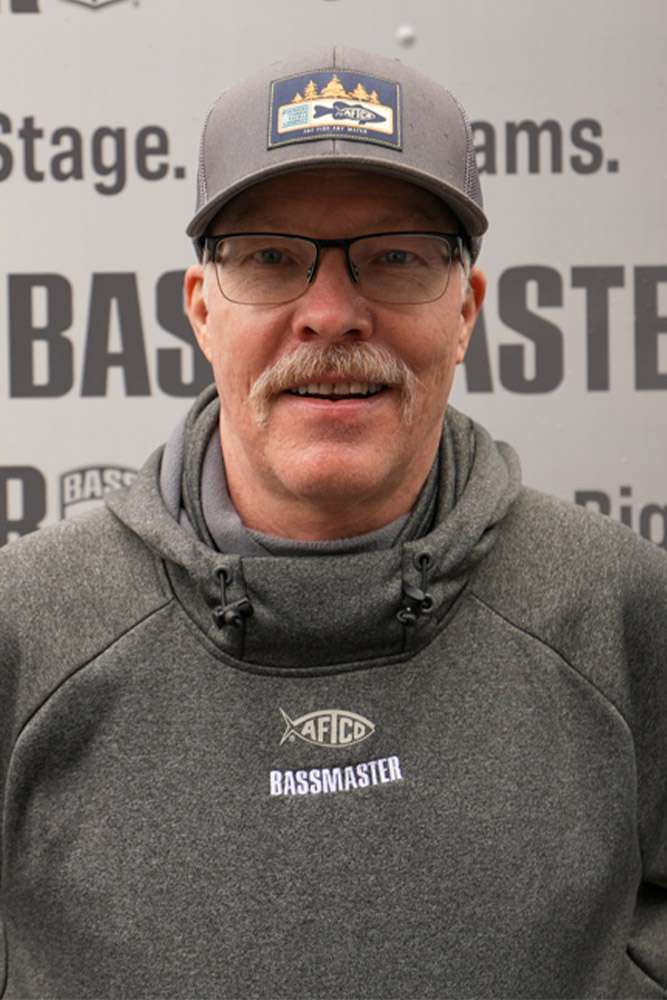
My wife, Gretchen, and I have always loved camping. We both grew up roughing it in tents and pop-up campers, cooking on wood fires and bedding down in sleeping bags. These days, we want a little more in the way of creature comforts, such as a good mattress and air conditioning.
We thought a little about buying an RV but decided renting one would be a great way to test the waters and experience the lifestyle. (At the end of the story, you’ll find out if we still want to buy.) Our destination would be the northwest corner of Michigan’s lower peninsula, Gretchen’s home state and an area full of crystal-clear lakes. Here’s how the process worked for us and some things we learned along the way.

Choose A Rental Organization
We discovered quickly that renting RVs has become very popular, in part because it’s a safe way to vacation during the pandemic. There are many companies to rent from, including Outdoorsy.com, RVshare.com and CruiseAmerica.com. A friend had used Outdoorsy, so we started there. Its website is very similar to Airbnb, with many photos of each RV, user reviews and easily understood pricing. And like Airbnb, with Outdoorsy you are renting from individuals rather than a corporation. We liked that approach, and it ended up being a great experience. You simply put in the dates you want to use the RV and the location where you want to get the RV. Hundreds of options popped up, from tiny teardrop trailers to giant 50-foot RVs the size of an 18-wheeler. Prices vary greatly, depending on the age of the RV, size, amenities and whether you are renting during a popular time of the year.

Drive vs. Tow
One decision you’ll need to make early on is, do you want to drive the RV or tow it behind your vehicle? We decided to tow ours behind my 2010 Toyota Tundra primarily because we planned to make day trips once we set up camp. That meant we could unhook the truck and explore the area. I’m glad we chose this path. Once our RV was set up, we were able to dedicate our time to relaxing and having fun. To tow an RV, you’ll need a trailer hitch and enough towing capacity on your vehicle to pull the RV. The RV we decided on weighed 5,000 pounds, and my towing capacity is 10,800 pounds, so we were fine. Assume that when pulling an RV, you will burn more gas. That’s normal.

Start Small
The bigger the RV, the more luxuries it will have. That’s appealing. But the downside is you have to drive (or tow) it and back it into a campsite that is typically narrow. If you don’t have experience with giant vehicles, start out with a small RV. That’s the path we took in choosing an 18-foot Winnebago Micro Minnie. I’m used to towing a similar-size boat, so this felt comfortable. And it was. But if you’ve never towed a boat or trailer, don’t assume it is easy. Try a practice run with a friend who has a boat or trailer. And plan to do a trial run with the RV owner when you pick it up. Most of all, when driving or backing in an RV, take your time. It is much easier to correct your course when going slowly.

Decide Where You’d Like To Pick Up The RV
You can rent an RV from just about anywhere in America. We live in Alabama and initially thought we’d rent the RV close to home and drive it to our destination in northern Michigan. But, once we understood the pricing model (the RV we rented was about $130 a day, including insurance and taxes), we decided it would save money to rent the RV from an owner closer to our destination. Ultimately, we rented from a very nice young couple in northern Indiana. Picking up the RV closer to our destination saved us two days of rental fees.

Quick, Pick Your Campsite
Once we pushed the button to rent the RV, we more or less felt like we were done. But one major detail remained: choosing a campground. We were only six weeks away from our departure date, and northern Michigan is a very popular camping destination. We later learned that many experienced campers reserve the best summer campsites there as early as February or March. For our trip, the most popular parks were already booked solid. We eventually found some openings, but typically in two- or three-night blocks. We needed seven nights. So, we got creative and spent five nights at the Interlochen State Park north loop and then moved a half-mile to the south loop for our last two nights. Not the end of the world, but for novices like us it took about an hour to take down the RV and then set it up again at the second campsite. The lesson for you: Reserve your campsite as far in advance as possible.

Learn All The Details From Your Host
When you pick up your RV, the owner will carefully walk you through how to use the RV. With Outdoorsy, the owner has a premade checklist to go through, which both parties must sign when complete. It included things like how to hitch the RV to your vehicle, how to drain the black water (toilet) and gray water (shower and sink) and how to level the RV. Take good notes; our owner did leave us with a very detailed notebook. The owner will also ride along on a test-drive, offering useful tips for driving or pulling the RV. The rentals on Outdoorsy include a list of everything that comes with the RV. Our RV included folding chairs, a rug to place beneath the stairs (very helpful to avoid tracking dirt into your nice RV), pots, pans, utensils and more. All we needed to bring was food and clothing. Do keep the owner’s phone number handy for any emergencies or random questions. We only had one, and it was on the last day. “Do we need to drain the freshwater tank before returning the RV? And how do you do that?” The answer was yes, and the drain was conveniently located near one of the wheel wells.

Pack Smart
As we were packing for the trip, we figured, gosh there’s so much room in this big RV, we can bring all the clothing we could ever possibly need. I brought boots, shoes, sandals, five pairs of shorts, four pairs of pants, hoodies and more. Like most vacations, I didn’t wear most of it. And what we learned about an 18-foot RV is the bed, table, kitchen and bathroom take up most of the space. There was no room inside the RV to leave our large suitcases lying around. But there were cabinets above and below the bed, and that’s where we put most of our clothing. All the shoes were piled up below the table, and we stored the suitcases and some extra clothing in the truck. Our lesson was, even though your living space is much bigger than a tent, you still need to pack efficiently.
Do we still want to buy an RV? After seven nights in the Winnebago Minnie, we came to a few conclusions. The RV life was a fun adventure. It was a very comfortable way to be in nature. But we’re not in a hurry to buy one. I’d rather not deal with the storage and maintenance. And why spend a large chunk of money to buy when you can easily rent? We also determined that the campground is just as important as the RV. We stayed in a huge campground with 490 sites, and it felt a tad like camping in a crowded suburb. Next time, we’ll plan ahead and spend more time researching the campgrounds. We also learned that most RVers don’t spend a lot of time actually living inside the RV. We could see why; even with just the two of us, the RV felt a bit crowded at times. We saw lots of elaborate setups outside RVs for relaxing, including big screened-in tents where families ate dinner and played games into the evening. That looked like fun.





